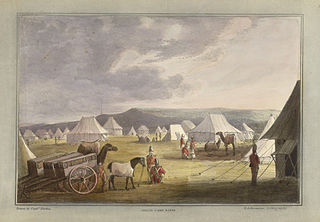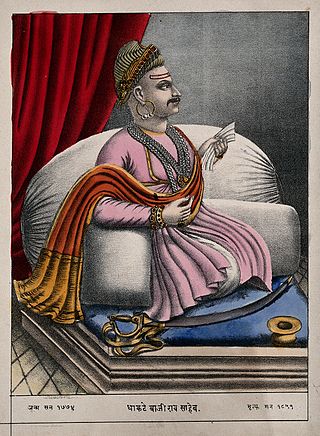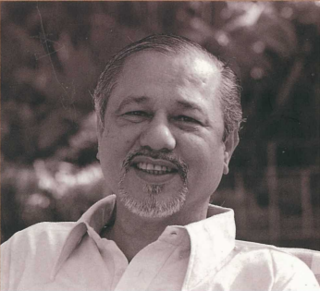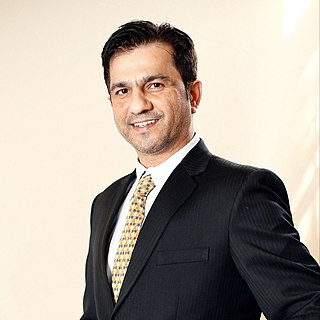
The Third Anglo-Maratha War (1817–1819) was the final and decisive conflict between the British East India Company and the Maratha Confederacy in India. The war left the Company in control of most of India. It began with an invasion of Maratha territory by British East India Company troops, and although the British were outnumbered, the Maratha army was decimated. The troops were led by Governor General Hastings, supported by a force under General Thomas Hislop. Operations began against the Pindaris, a band of Muslim mercenaries and Marathas from central India.

The Peshwa was the second highest office in the Maratha Confederacy, next in rank and prestige only to that of the Chhatrapati. Initially serving as the appointed prime minister in the Maratha Kingdom, the office became hereditary after the death of Shahu in 1749. During the reign of Shahu, the office of Peshwa grew in power and the Peshwas came to be the de facto rulers of the Maratha Confederacy. However following the defeat of the Marathas in 1761, the office of the Peshwa became titular as well and from that point onwards served as the ceremonial head of the Confederacy underneath the Chhatrapati.

Madhavrao I was the son of Peshwa Balaji Bajirao and grandson of Peshwa Bajirao I who served as 9th Peshwa of the Maratha Confederacy. During his tenure, the Maratha Confederacy recovered from the losses they suffered during the Third Battle of Panipat, an event known as Maratha Resurrection.

Narayanrao was the 10th Peshwa of the Maratha Confederacy from November 1772 until his assassination in August 1773. He married Gangabai Sathe who later gave birth to Sawai Madhavrao.

Baji Rao II was the 13th and the last Peshwa of the Maratha Confederacy. He governed from 1795 to 1818. He was installed as a puppet ruler by the Maratha nobles, whose growing power prompted him to flee his capital Poona and sign the Treaty of Bassein (1802) with the British. This resulted in the Second Anglo-Maratha War (1803–1805), in which the British emerged victorious and re-installed him as the titular Peshwa. In 1817, Baji Rao II joined the Third Anglo-Maratha War against the British, after they favoured the Gaekwad nobles in a revenue-sharing dispute. After suffering several battle defeats, the Peshwa surrendered to the British, and agreed to retire in return for an estate at Bithoor and an annual pension.

The Chitpavan Brahmin or the Kokanastha Brahmin is a Hindu Maharashtrian Brahmin community inhabiting Konkan, the coastal region of the state of Maharashtra. Initially working as messengers and spies in the late seventeenth century, the community came into prominence during the 18th century when the heirs of Peshwa from the Bhat family of Balaji Vishwanath became the de facto rulers of the Maratha empire. Until the 18th century, the Chitpavans were held in low esteem by the Deshastha, the older established Brahmin community of Karnataka-Maharashtra region.

Pune district is a district in Western Maharashtra with Administrative Headquarters in Pune city. Pune district is the most populous district in the Indian state of Maharashtra. It is one of the most industrialised districts in India.
Gokhale is an Indian surname found in the Chitpawan community native to the western state of Maharashtra.

The Battle of Khadki, also known as or the Battle of Ganeshkhind and Battle of Kirkee took place at modern day Khadki, India, on 5 November 1817 between the forces of the British East India Company and the Maratha Confederacy under the leadership of Appasaheb Bhonsle. Company forces achieved a decisive victory, with Khadki later becoming a military cantonment under British rule.

The Battle of Koregaon was fought on 1 January 1818 between the British East India Company and the Peshwa faction of the Maratha Confederacy, at Koregaon Bhima.
Balaji Pant Natu was a spy working for the British against the Peshwa Bajirao II during the era of Maratha Confederacy in the Third Anglo-Maratha War. He belonged to the Chitpavan Brahmin community of Maharashtra and came from the powerful Natu family of Pune. When the British forces entered Shanivar Wada on November 18, 1817, Natu unfurled the Union Jack over the building. Before he became an agent for the British governor of Bombay, Montstuart Elphinstone, he served the Raste family.

Dnyaneshwar Chandrashekhar Agashe was an Indian businessman, cricketer, cricket administrator and philanthropist. He is best remembered for founding the Suvarna Sahakari Bank in 1969, and the scandal following the bank's alleged scam case in 2008. He played first-class cricket for Maharashtra between 1962 and 1968, and served as managing director of the Brihan Maharashtra Sugar Syndicate from 1986 to 1996. He was twice elected vice president of Board of Control for Cricket in India, serving his second and final term from 1995 to 1999.

Ashutosh Dnyaneshwar Agashe is an Indian cricket player and businessman. He played the Ranji Trophy for the Maharashtra cricket team from 1996 to 1999. He has served as the managing director of Brihan Maharashtra Sugar Syndicate Ltd. since 1996.
The Brihan Maharashtra Sugar Syndicate Ltd. is an Indian sugar company headquartered in Pune, Maharashtra, India. Established in 1934, it is one of the oldest companies in India.

Chandrashekhar Govind Agashe was an Indian industrialist and lawyer, best remembered as the founder of the Brihan Maharashtra Sugar Syndicate Ltd. He served as the managing agent of the company from its inception in 1934 till his death in 1956. He served as the President of the Bhor State Council from 1934 to 1948, having previously been the council's Vice President from 1933 to 1934, its Secretary from 1932 to 1933, and the Chief Justiciar of the Indian princely state itself from 1920 to 1932.

Sakharam Bapu Bokil, born Sakharam Bhagwant Bokil, was an influential minister, diplomat and statesman of the Maratha Empire during the Peshwa administration in Pune, India. Before joining the Peshwa administration at Pune, Sakharam was the Kulkarni of Hivare.
Jagdish "Panditrao" Chandrashekhar Agashe was an Indian industrialist, best remembered for succeeding his father Chandrashekhar Agashe as the joint managing director of the Brihan Maharashtra Sugar Syndicate Ltd. from 1970 to 1978. The Panditrao Agashe School in Pune is named in his honour.

Mandar Dnyaneshwar Agashe is an Indian businessman, music director, and former musician. Best known for having founded Sarvatra Technologies in 2000.

Sheetal Dnyaneshwar Agashe is an Indian businesswoman and former actress, who has served as managing director of Brihans Natural Products since 2013, for which she has received various accolades, including a Times Visionary Award, a Femina Pune's Most Powerful Award, and two Times Women of the Year Awards. A former actress, she had a recurring role from 1999 to 2003 on the sitcom Yes Boss (1999–2009), and a leading role in the independent film Minus One (2005).
Shakuntala Bhupendra Karandikar was an Indian biographer and philanthropist, best remembered for writing the Marathi biography of her father Chandrashekhar Agashe titled Vishwasta (1992), and her advocacy and philanthropy towards women's causes in Dahanu.















